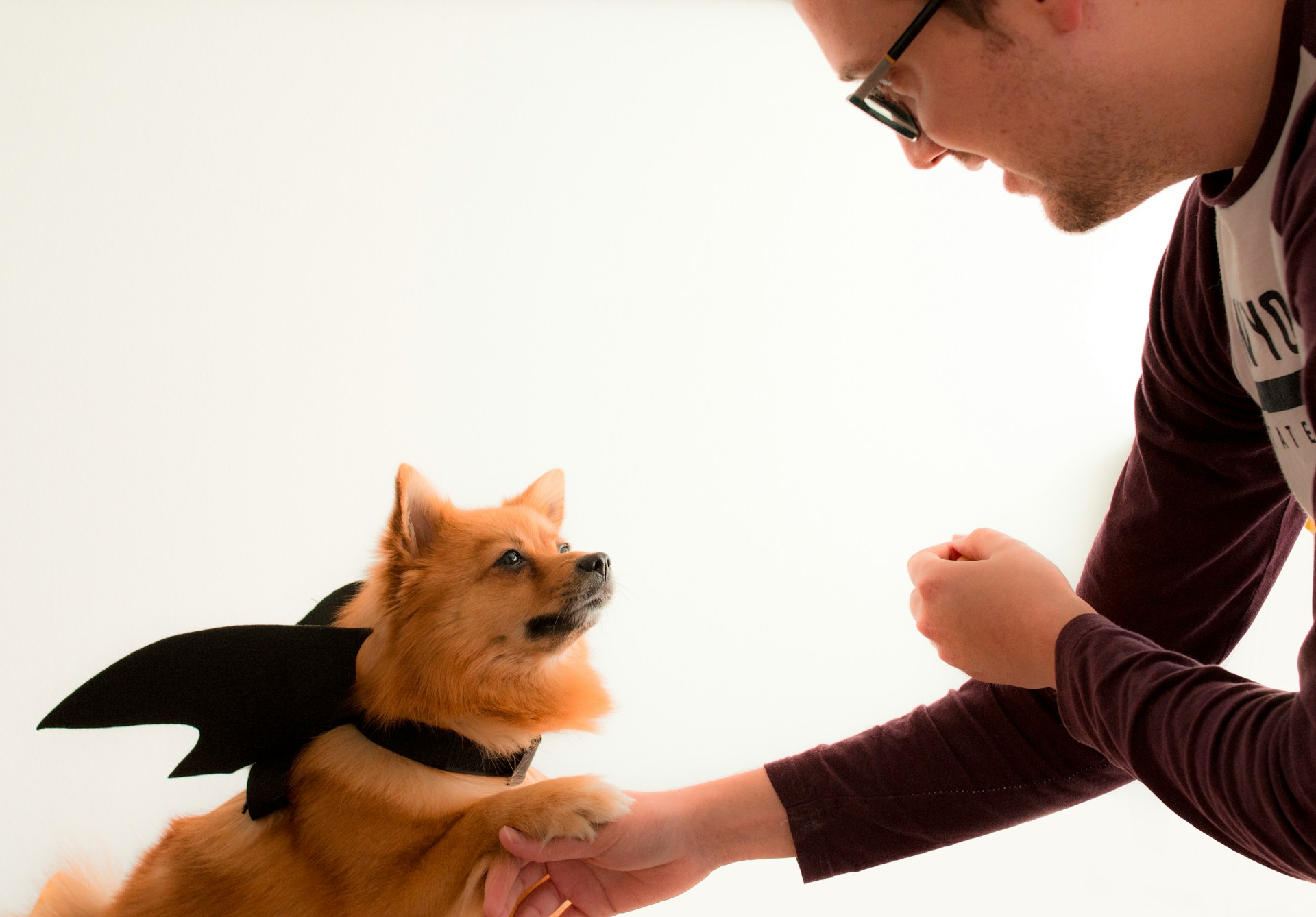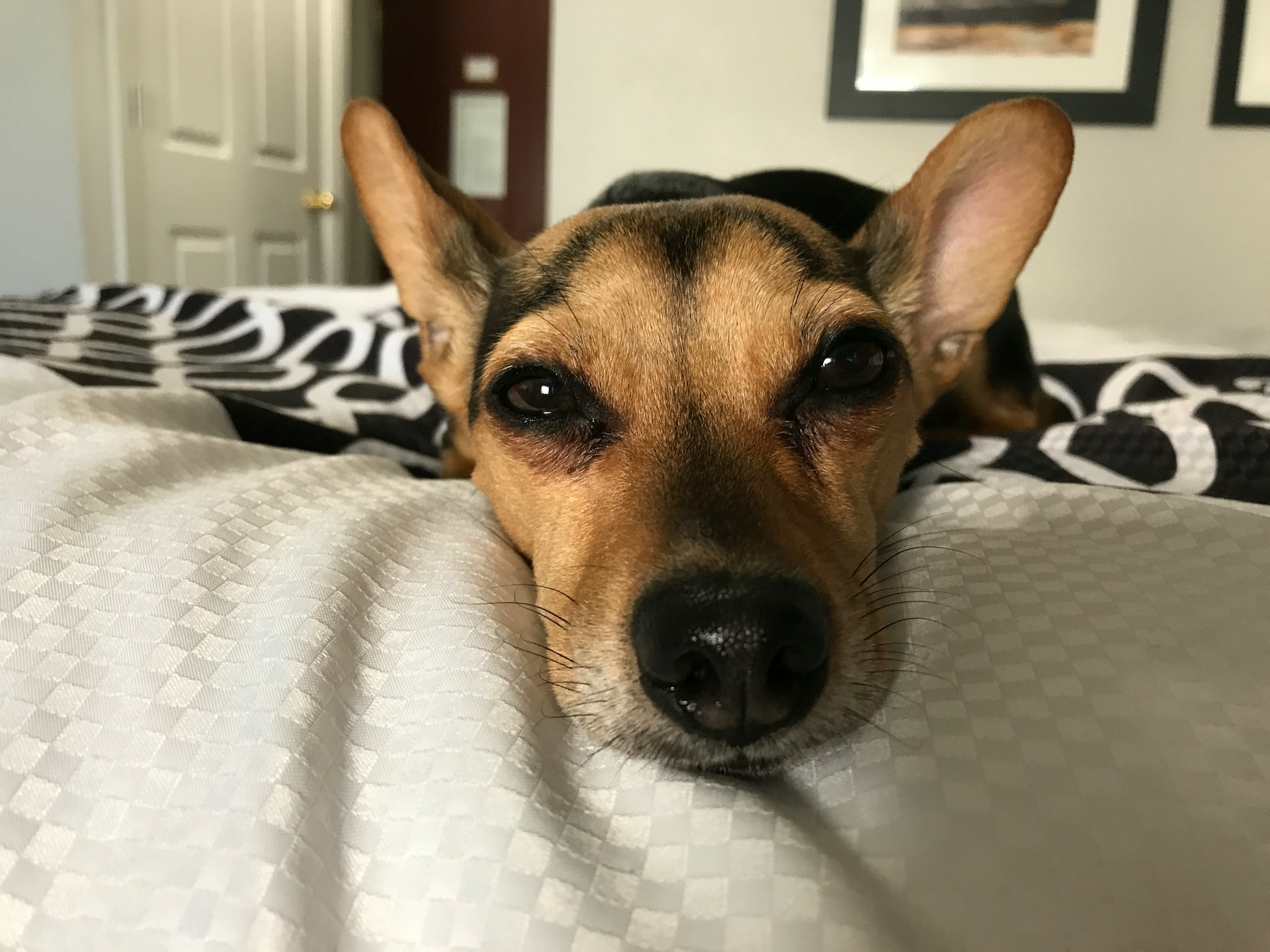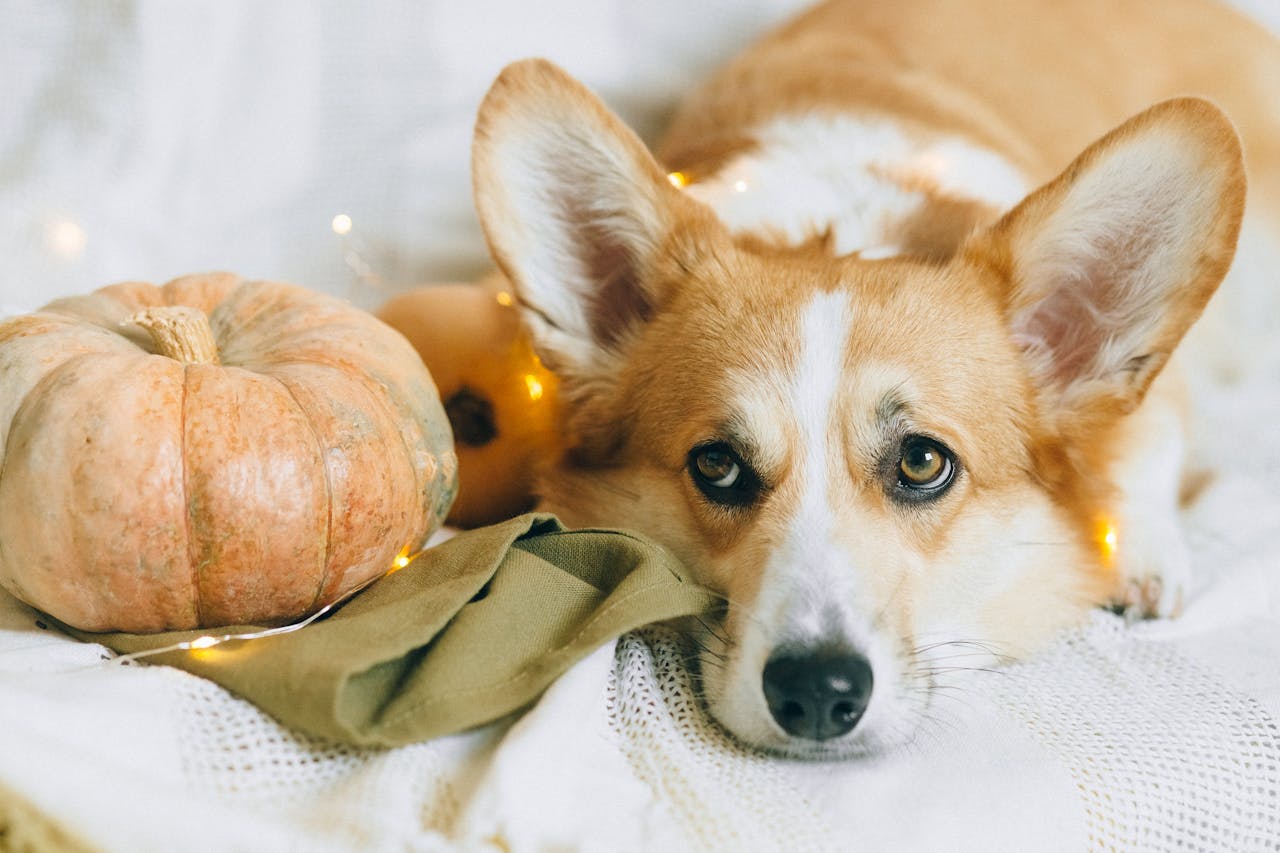That time of year has arrived when streets, houses, and shops are filled with orange tones, pumpkins, and spider webs. If you live in a place where this holiday is celebrated with great enthusiasm, you know that our dogs can suffer from the crowds, costumes, and unusual noises. Therefore, it’s important to take extra precautions to ensure our family’s safety. Here are some practical tips to keep your dog safe on Halloween night.
1. Avoid access to treats and chocolates
Candy, especially those containing chocolate or xylitol (a common sweetener in sugar-free candies), is highly toxic to dogs. Chocolate, in particular, can cause vomiting, diarrhea, tremors, heart problems, and in severe cases, death. Make sure to keep all treats out of your dog’s reach, preferably in a box or high place they can’t access.

2. Be careful with decorations
Halloween decorations such as pumpkins, candles, lights, and other ornaments can be dangerous if your dog ingests them or knocks them over accidentally. Opt for LED lights instead of candles and make sure the decorations are out of your dog’s reach. Watch out for candy wrappers that fall on the floor! They can be a choking hazard, and if swallowed by your dog, they may cause intestinal blockage.
3. Keep your dog indoors
With people and kids coming and going for trick-or-treating, doors can accidentally be left open. If your dog is near the door, it might escape and get lost in the chaos. It’s best to keep your dog in a quiet, safe room away from the main entrance. If you prefer to keep them with you, make sure they are always under supervision.
4. Comfortable and safe costumes

Although it may be tempting to dress up your dog for the occasion, some costumes can be uncomfortable or dangerous. If you decide to dress your dog, ensure the costume is not restrictive and doesn’t have small parts that could come off and be swallowed. Also, watch your dog’s behavior—if they seem uncomfortable, anxious, or upset, it’s better to remove the costume. We always recommend not dressing up dogs in any situation.
5. Updated identification
With so many new stimuli, some dogs might get scared and run away. To ensure you can quickly recover them, it’s essential that they wear up-to-date identification. And of course, your dog should always have a microchip, which increases the chances of being found if lost.
6. Reduce stress
Loud noises like doorbells, shouting, and fireworks (if any) can cause anxiety in dogs. If you know your dog gets nervous during Halloween, create a calm environment at home. You can play soft music or turn on the TV to mask outdoor sounds. Some dogs may benefit from a “safe space,” such as a bed where they can feel protected. In extreme cases, consult your vet about using natural calming products or anxiety medications.
7. Be cautious with nighttime walks
If you decide to walk your dog on Halloween night, take extra precautions. Use a short leash for better control, as the environment may be more chaotic than usual. Also, ensure your dog has visible identification, like a reflective collar or LED lights on their leash or harness, so they’re easily seen in the dark.
8. Teach children how to interact with your dog
If you have children at home or expect visitors during Halloween, it’s important to remind them how to interact safely with your dog. Not all dogs react well to costumes or excessive physical contact. Instruct children not to make sudden movements, not to shout near the dog, and to respect its space.
9. Be cautious with constant doorbells
If your dog gets easily agitated by the sound of the doorbell, consider turning it off during Halloween night. Instead, you can place a note outside asking the children to knock lightly or simply leave the treats at the entrance. This will help keep the house calm.
10. Don’t force socialization

Some dogs enjoy company and the hustle and bustle, but others prefer peace and quiet. If your dog seems nervous or scared by the costumes, noises, or excess of people, respect their space. Don’t force them to interact or stay near the chaos of the night. A scared dog can become unpredictable and, most importantly, have a really bad time. So it’s best to let them be in a place where they feel safe.
Conclusion
Halloween night can present additional risks for dogs, but with proper precautions, you can ensure your furry companion stays safe and comfortable. The key is to minimize stress, avoid common hazards like candy and decorations, and provide a calm and secure environment where your dog can relax. With these simple steps, both of you can enjoy the holiday without worries.
What is Gudog?
Gudog is the easiest way to find & book the perfect dog Sitter. Thousands of loving Sitters are ready to care for your dog like family! All bookings come with Veterinary Care & Free Cancellation.
